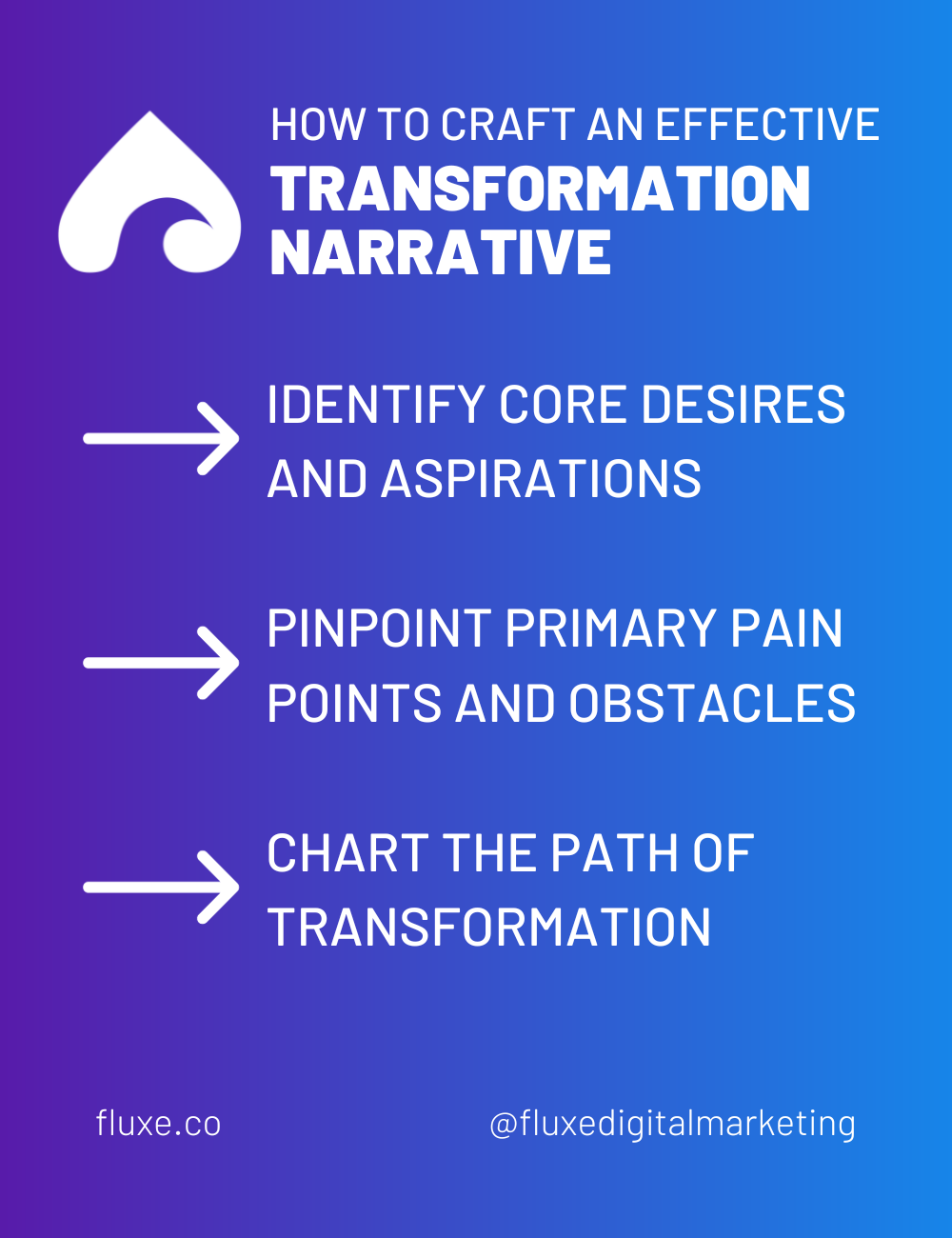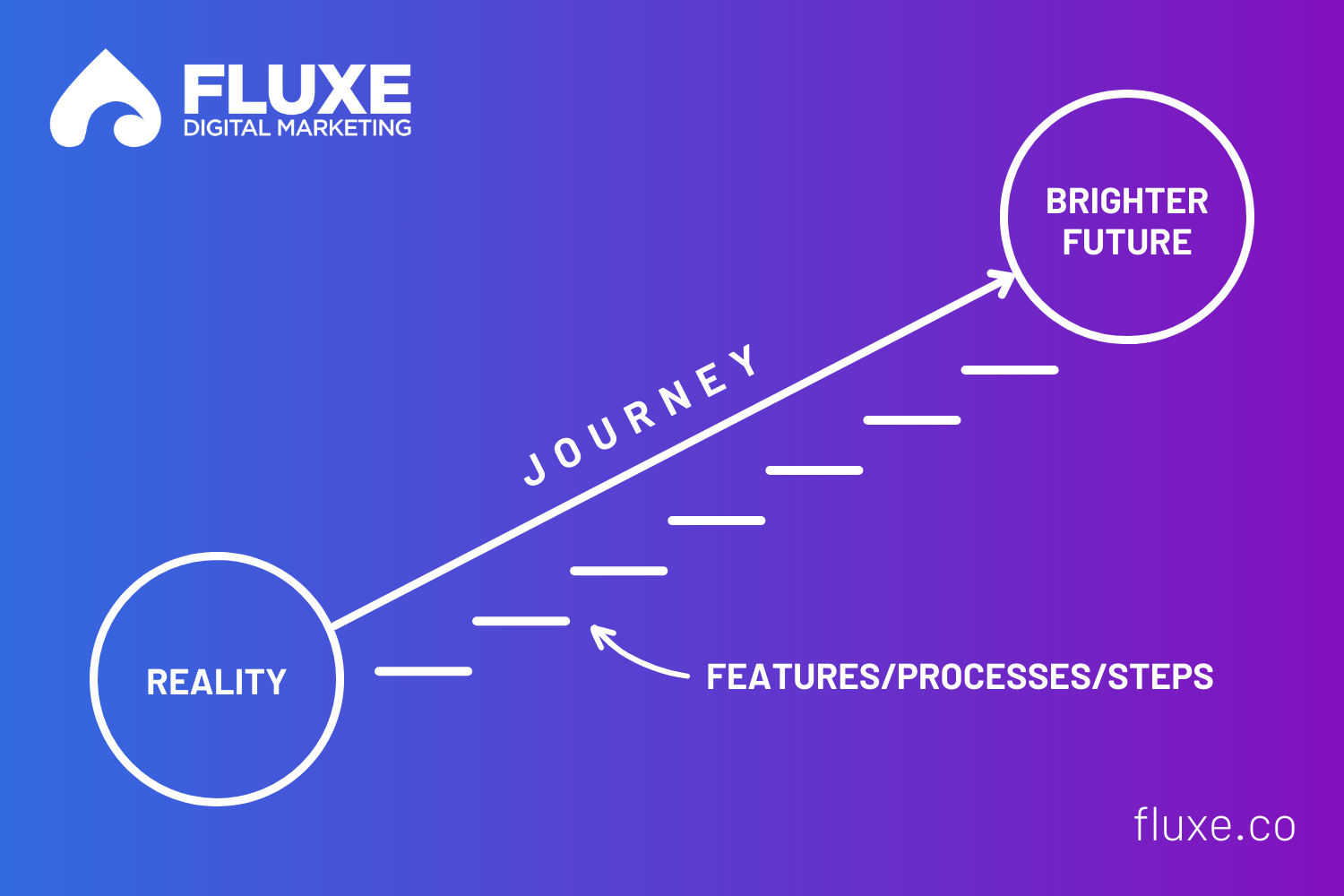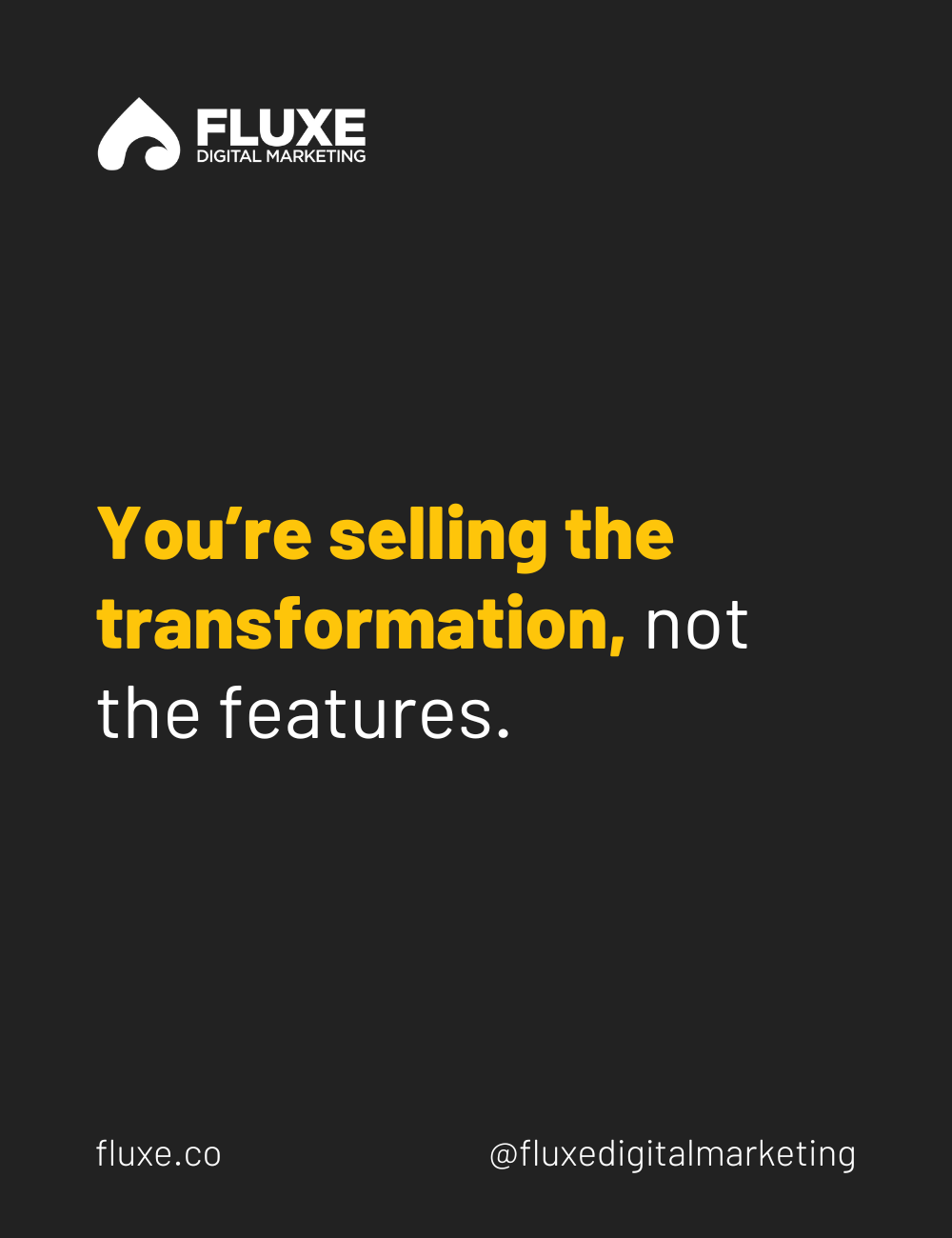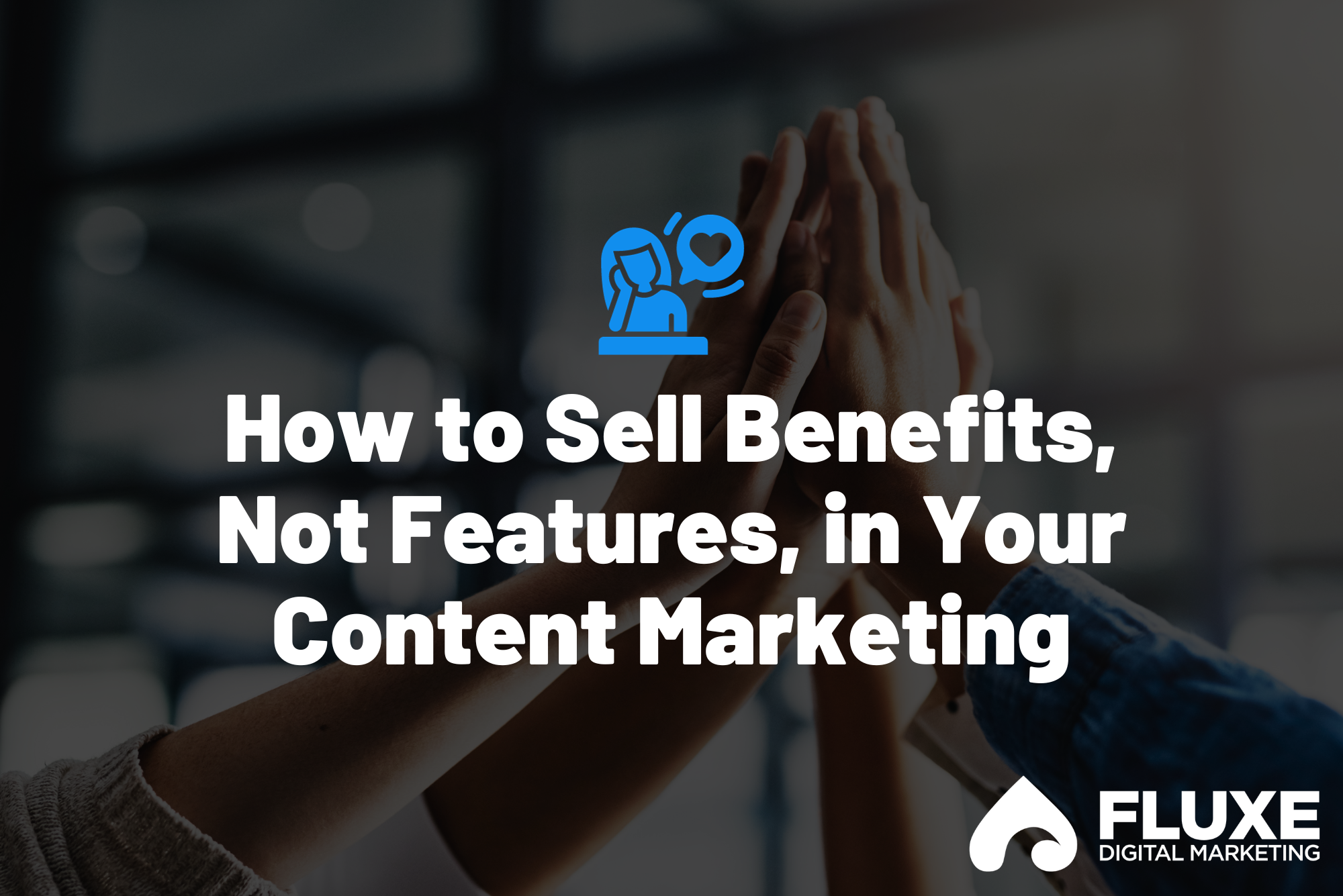Many businesses default to marketing campaigns that tout the features of their product or service.
That’s understandable. You know every nut and bolt of your great offering, and you want to show it off.
But here’s the hard truth: clients don’t care about features.
For example, nowadays, you can’t swing a dead cat without hitting an ad for the new iPhone 15. “It’s made with titanium!” they proudly boast.
So what? What will titanium do for us?
Your customers want to know how your product or service will transform their situation, not just what element it’s made of. How will it take them from their frustrating reality to the future they dream of?
You’re selling the transformation, not the features. When you showcase the bright future your clients want, you forge an emotional bond more compelling than any laundry list of product specs.
Let’s explore why transformational marketing outperforms feature-focused marketing. Then, we’ll explain how to put this concept into practice.
Why Features Fall Short
It’s natural to fixate on product or service features. After all, they differentiate you from your competitors.
However, prospects may not assign the same weight to those capabilities, and they may not inherently grasp how certain functionalities benefit them. Sure, they scan for differences at a surface level, but that’s not what seals the deal.
What makes them pull the trigger is believing your product or service will transform their situation for the better — that it will take them from frustrating reality to happily ever after.
Transformation is the ultimate benefit that speaks to the deepest human hopes and fears. Fail to convey it and your marketing sounds like static.
Introducing the Power of Transformation
Transformation marketing spotlights the impact your offering has on people’s lives.
Rather than listing features like a phonebook, transformation marketing paints a vivid portrait of the future your customers desire and demonstrates that your product or service can get them there.
Say you run a concierge medical practice focused on preventative care. Instead of touting only your short wait times, personalized attention, and diagnostic capabilities, paint a picture of what working with you looks like.
You’re not just any doctor’s office; you’re a prestigious health and wellness membership dedicated to patient education and empowerment. As a physician, you don’t just treat illnesses. You guide clients toward peak vitality and an exceptional quality of life.
Traditional marketing lists the services you offer like a menu. It’s informative, but it doesn’t inspire or engage prospects.
Transformation marketing sells the promise of a happier future, not just the steps patients take to get there. It connects with people emotionally and ignites their desire for a long, healthy life.

Crafting Your Audience’s Transformation Narrative
To execute an authentic transformation narrative, you have to understand your audience. Having insight into their frustrations and aspirations helps you depict the current reality you guide them from and the brighter future you guide them to.
Here’s how to map this transformative journey:
1. Identify Core Desires and Aspirations
Explore the deeper motivations driving your target audience. What goals do they want to accomplish? How do they envision success looking and feeling?
The aspirations may be concrete, like launching a business by a certain milestone, or less defined, like a long, healthy life free from stress. Get as much clarity as you can around those North Stars.
2. Pinpoint Primary Pain Points and Obstacles
Now, examine the flip side. What’s your audience’s status quo? Where do they struggle? Identify the fears, roadblocks, and frustrations keeping them from their ambitions.
Empathize with their struggle before sweeping in as the solution. Establish yourself as someone who understands their reality before showcasing the transformation.
3. Chart the Path of Transformation
Articulate the path between your audience’s dream future and where they stand today. Then position your offering as the magic wand that brings them there.
Paint the brighter future your target audience dreams of, then validate their challenges. You only get one chance at a first impression, and leading with negative language leaves an unpleasant taste in a prospect’s mouth.
This narrative flow forges an emotional connection and positions you as the catalyst for the change your audience is looking for.
Leading with benefits isn’t new. You’ve probably heard the mantra “Sell benefits, not features” many times; it’s the backbone of effective one-on-one sales conversations. However, content marketing doesn’t deal with one-on-one interactions.
The trick is to reflect the insights captured in those one-on-one conversations in content meant for a readership of thousands. Sound challenging? Here’s how to do it.
Transformation Marketing in Practice
Crafting a transformation narrative isn’t merely an exercise for your website’s messaging. It’s a frame of mind that pervades your entire marketing mix.
Leverage transformation marketing everywhere — and we mean everywhere. Map out every touchpoint you have with prospects. Is the brighter future your business represents positioned front and center? If not, it’s time for an update.
Here are some key channels to focus on:
- Homepage/About Page: The first thing your target audience should see when they visit your website is imagery and copy that depicts the brighter future they dream of. Use emotive language and vivid imagery to make that vision tangible.
- Blog Content and Email Copy: Share success stories, validate audience realities, and explain how your product or service takes them from point A to point B. Remember: When you articulate someone’s problem better than they can, they immediately associate you with the solution.
- Case Studies: Share how a client realized their brighter future with you. This is the strongest testament that you’ve taken people on this journey before — and that the reader could be next.
Don’t get us wrong — your product or service features still matter. Just take care to anchor them within an overarching transformation narrative. Link specific functions to the aspirations they fulfill.
Sell Benefits — Sell Transformation
Ultimately, transformation is about your audience’s emotional payoff. If you want marketing that converts, sell the feelings inherent to the customer journey just as much as the practical details. Paint that future in vibrant colors and ensure your features support the vision — not the other way around.



